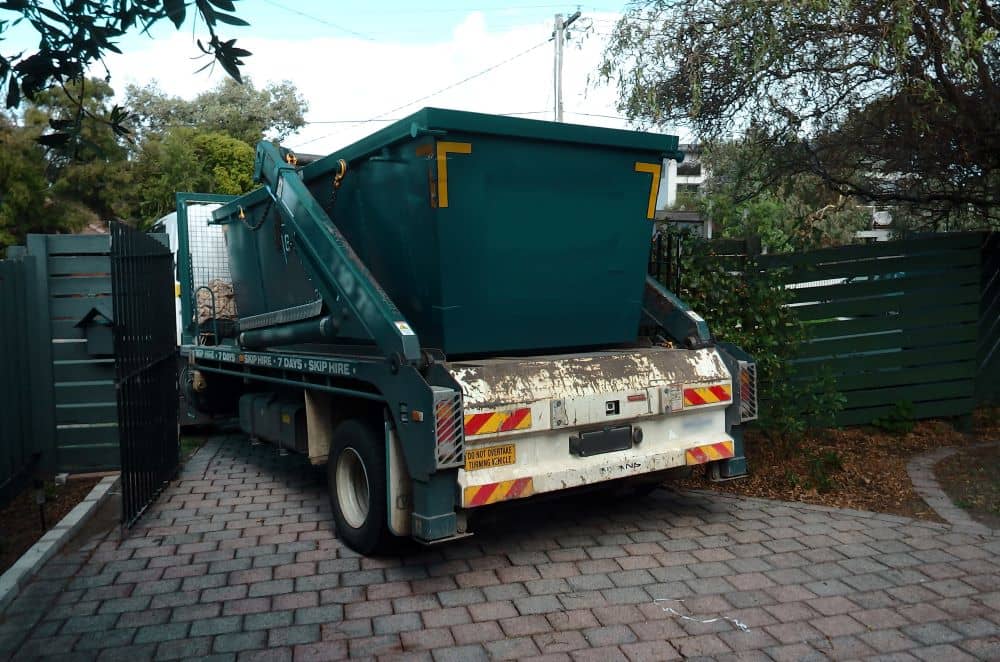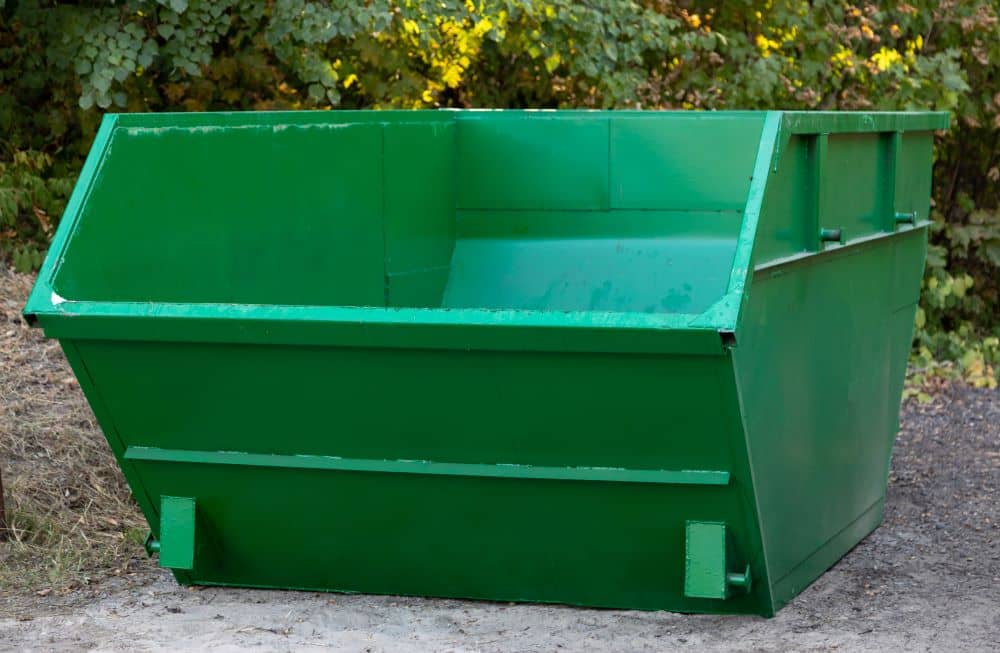
Updated 01 November 2022
As you plan for an upcoming landscaping project or household renovation, you’ll need a skip bin to handle the waste. But as the start date of your project comes up, you may not know where to put the bin during use.
The exact placement of your skip bin depends on a variety of factors, including the bin size and the layout of your property. This blog provides the best practices for proper skip bin placement.
Things to Keep in Mind When Placing Your Skip Bin
You can quickly rule out the areas where it’s unsafe and inappropriate to place your skip bin by considering the following:
- Accessibility: Make sure you and the truck have no problem accessing the skip bin for throwing and collecting waste.
- Damage: The bin is not yours, so you need to reduce the risk of incidental damage. Keep it away from the driveway and pathways to protect it from cars and humans.
- Hazards: Wires, neighbours and their kids, and pets can cause accidents as you try to access the skip. Place the skip away from these hazards, as well as overhanging tree branches and powerlines
- Permits: Generally, you don’t need to get a permit to have a skip on your private property. However, you will most likely need one from a local council if you intend to put a skip on public or commercial property. We delve a little more into permits later in the article.
Where to Place Your Skip Bin
We recommend placing your skip within your property to avoid additional requirements. Plus, you won’t have to deal with passers-by throwing their rubbish into your bin. But where do you place it exactly? Here are some suggestions:
- Driveway: Trucks can be 2.5 to 3 metres wide. Check with the skip bin provider to know if their truck can fit in your driveway comfortably, especially if you have gates or pillars with narrow access.
- Front Yard: Most properties with sufficient space have the skip in their front lawn. Make sure that you provide adequate turning space, even if the provider has a smaller truck. That way, the truck can easily drive and reverse into the drive. There should also be no issues in lowering the skip onto the ground.
- Roadside or Front Nature Strip: Not everyone has a spot for skip bin placement on their property. If so, you may ask the provider to help find a suitable location for the container on the road or front nature strip. Keep in mind that the bin should NEVER stick out into the road, so keep it parallel to the kerb. Your skip bin business knows the ideal placement, so there’s room for their truck to deliver and collect the bin. Note that some locations, including inner suburbs, may need a permit from the local council.
- Commercial Locations: You’re required to get Strata Plan Management permission for skip bin placement in a commercial location. Underground car parks may not have high enough overhead clearance for a skip truck, which is why skips are usually placed on the street.
Skip Bin Placement Permit and Regulations
The rules vary from state to state, typically depending on the local councils that create and enforce the skip bin laws. However, they are not as complicated as you may think. In general, you can put your skip bin in your front yard, driveway, and garage as long as it is on your property and does not impede other pedestrians and vehicles.
For most councils in Perth, you will not be required to have a skip bin permit. However, placing it on the road, footpaths, and other public places may need approval. The process depends from council to council and your property type (house, townhouse, apartment, etc.)
Dos and Don’ts of Skip Bin Placement
- Do Elevate the Bin Off the Ground
Skip bins weigh quite a bit. If you feel concerned about your grass, driveway, or pavers, place some planks under the container to elevate it. This simple step distributes the pressure of the skip bin while reducing the risk of scrapes and scratches.
- Do Ensure Truck Access
Can the bin actually be dropped off in your chosen spot? Calculate the space before hiring a skip. Truck power and machinery are essential in dropping off and picking up the bin, so there should be truck accessibility close by. Skip bins can be as small as 2m, but the truck can be about 3m wide and 5m tall (or bigger). There should be enough room for the truck’s arms to lower and collect the bin.
- Do Inspect the Ground
Clear the pathway for the truck before it arrives. Also, ensure that the ground for the skip drop-off location is flat and the area is within reasonable reach for the truck. Don’t worry about a slight incline or even a winding driveway. As long as it is not a steep cliff, you’ll have the bin delivered to you safely and on time.
- Do Consider Where the Waste is Coming From
Skip bin placement is not just about the rules but also your convenience. Where does the majority of the waste come from? Is it in a room in front of your house, or are you clearing your backyard? Wherever your renovation or clearing out may be, you want the skip bin to be as close as possible.
- Don’t Block the Street
Even if you have a council permit to place a skip bin on the street, you cannot put the container where it would impede traffic. Most areas require that you leave at least three metres of clear pavement for drivers. Check with your chosen removal company and local council to ensure you comply with placement regulations.
- Don’t Infringe on Your Neighbours’ Property
Be courteous to your neighbours and use common sense when placing your skip bin. Please do not place the trunk where it would interfere with your neighbour’s daily life. If you live in a cul-de-sac, you will likely need permission from all homeowners in your location before placing a skip bin there.
- Don’t Interfere with Utilities
Skip bins, especially larger models, can easily interfere with utility lines and drains. Ensure that your bin does not block water drainage points, especially if your project takes place during a rainy time of year. Also, consider whether your skip bin placement could prevent authorities from accessing utility lines and poles.
- Don’t Move the Bin Yourself
Once your bin is delivered, it should stay in that location until the next collection. Ask your technicians to move the bin after the collection if you have issues with the current spot and have an ongoing agreement. Do not attempt to move the bin yourself. Not only could you cause property damage to your home or vehicle, but you could also physically endanger yourself, other members of your household or your neighbours.
Use these guidelines to ensure your bin hire period goes by smoothly.
Still not sure where to put your bin? Please consult with the Backyard Bins technicians when they arrive. Our staff members have the training required to assess your property and help you decide how to maximise accessibility without endangering your property.
Backyard Bins Team
“ [rcblock id="2165"]”
